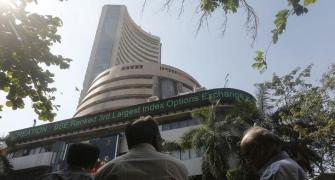One risk of investing in a very low-cost ETF is if a fund house runs it at below cost, it could close it if it fails to attract institutional money

Expense ratios of exchange traded funds (ETFs) have nosedived sharply to as low as five basis points (one basis point or bps is one-hundredth of one per cent). The US, a highly evolved market for passive funds, has a few players like Vanguard that offer ETFs with expense ratios in single digit.
Most charge 25 bps or more. Five years ago, it was unimaginable that expense ratios in India would tumble to such low levels and so fast.
Expense ratios of ETFs have declined primarily due to fund houses' desire to attract institutional money, chiefly from the Employees' Provident Fund Organisation (EPFO). The latter can annually invest five per cent of its fresh inflows into equity ETFs. This amounts to about Rs 5,000 crore (Rs 50 billion) each year, a significant sum.
Last year, EPFO had invested the entire amount in SBI (State Bank of India)'s Nifty and Sensex ETFs. This year it has decided to invest 10 per cent of the corpus in UTI Mutual Fund also.
"In due course, the EPFO could raise its equity exposure from five to 15 per cent. Private players could get a share of the EPFO pie. It is in this hope of attracting institutional funds that they will keep their expense ratios low," says Kaustubh Belapurkar, director-manager, research, Morningstar Investment Advisor India.
Cost: This should be your main criterion for selection. "An ETF tries to give returns equivalent to its index. Lower the expense ratio, better the returns it will offer," says Ankur Kapur, founder, Ankur Kapur Advisory. Today, you can get a Nifty or Sensex-based ETF at five-10 bps, a banking ETF at 15-20 bps, and smart-index based ETFs at 34-49 bps.
The minimum cost of running an ETF is eight-nine bps. One risk of investing in a very low-cost ETF is if a fund house runs it at below cost, it could close it if it fails to attract institutional money.
Tracking error: The tracking error is the standard deviation between the returns of the fund and of the index.
"The better fund manager keeps adjusting his portfolio so the difference in the return of the index and of his ETF is minimised," says Manas Shukla, head, ETFs, Edelweiss Asset Management.
Liquidity: The price at which an ETF trades on the exchange is often different from its NAV or net asset value. The bid-ask spread (or the difference between the highest price a buyer is willing to pay and the lowest price a seller is willing to accept) arises from the market maker's margins. It is higher in more illiquid ETFs.
Prefer ETFs with a lower spread. "In today's scenario, 35-40 basis points is a reasonable spread," says Shukla.
Investors should consider the impact cost.
A buyer who has to buy a large number of ETF units will not be able to purchase them all at the same cost.
If he has to buy 1,000 units, the first 400 may be available at Rs 100, the next 400 at Rs 100.75, and the last 200 at Rs 102. When he goes to sell, he may have to settle for progressively lower prices. This is referred to as impact cost.
If you find getting the data for these parameters difficult, consult a financial planner.
Photograph: Reuters








